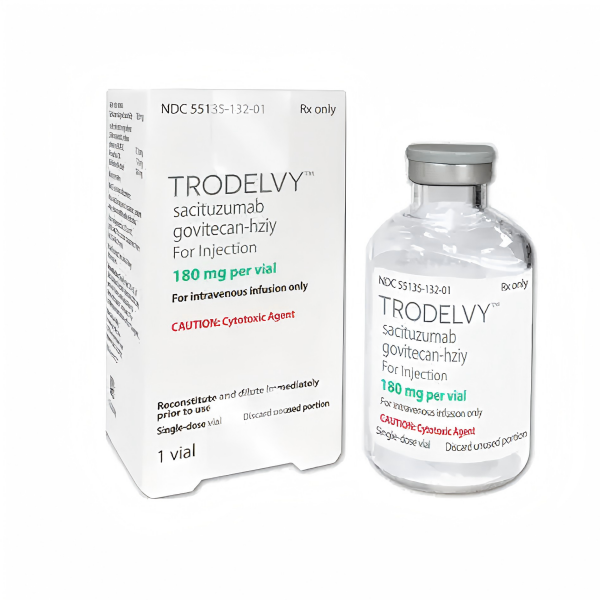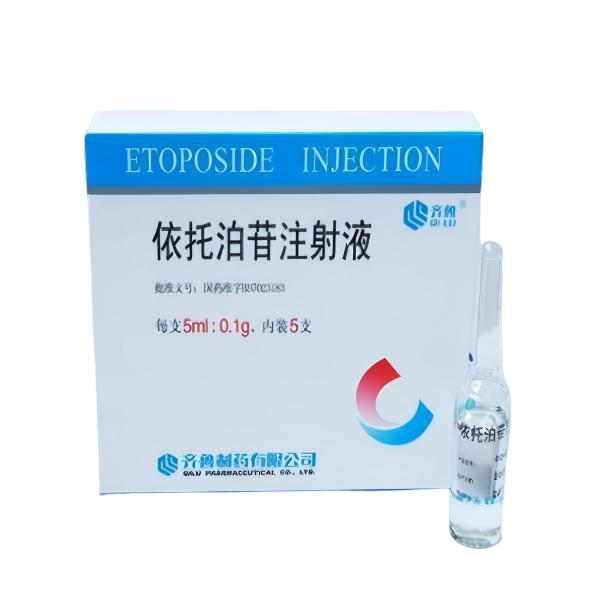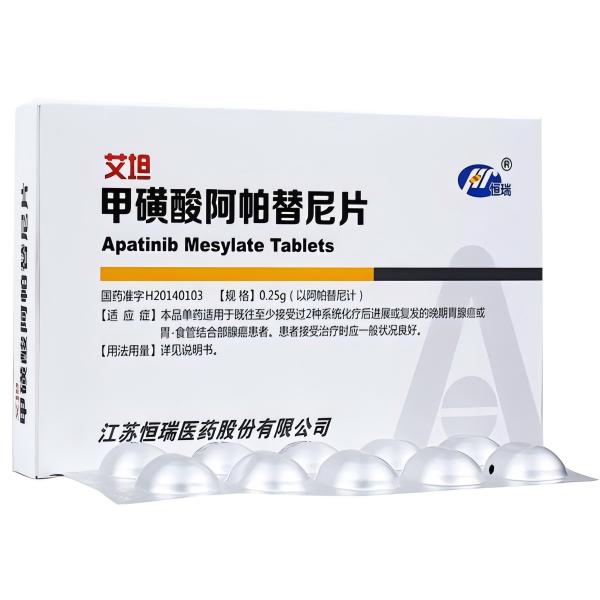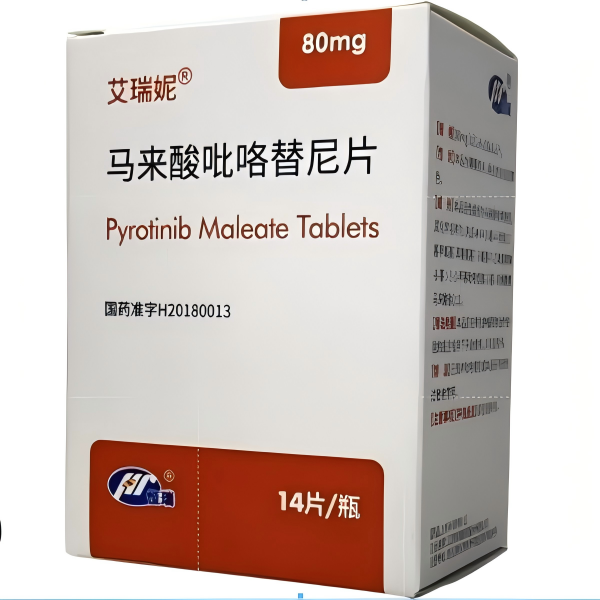

Pyrotinib Maleate Tablets
Jiangsu Hengrui Pharmaceuticals
Quick Info
HER2-positive breast cancer
This product, in combination with capecitabine, is suitable for the treatment of patients with HER2-positive recurrent or metastatic breast cancer who have not previously received or have received trastuzumab. Patients should have undergone anthracycline or taxane chemotherapy before using this product.
According to C32H31ClN6O3: (1) 80 mg; (2) 160 mg.
The recommended dosage of Pyrrolidine is 400 mg, taken once daily, orally within 30 minutes after meals, at the same time each day. It should be taken continuously, with a cycle of 21 days. If the patient misses a dose of Pyrrolidine on a certain day, there is no need to make up for it; they can just continue with the next scheduled dose. The recommended dosage of Capecitabine is 1000 mg/m2, taken orally twice daily (once in the morning and once in the evening, totaling 2000 mg/m2 per day), taken within 30 minutes after meals (the morning dose can be taken with Pyrrolidine), continuously for 14 days followed by a 7-day break, with a cycle of 21 days. For detailed information about Capecitabine, please refer to the Capecitabine medication instructions. Treatment should continue until disease progression or the development of intolerable toxic reactions.
Diarrhea: Diarrhea is the most commonly observed adverse reaction in clinical trials of Pyrroloquinoline quinone. In a Phase II study, the incidence of diarrhea when using Pyrroloquinoline quinone in combination with capecitabine for the treatment of recurrent or metastatic breast cancer was 96.9%, primarily at grade 1-2, with 15.4% of patients experiencing grade 3 diarrhea, and no reports of grade 4 or above diarrhea. The onset of diarrhea occurred relatively early, with 75% of patients experiencing their first diarrhea within the first 1-4 days of medication. The first week was a peak period for grade 3 diarrhea, with approximately 50% of first-grade 3 diarrhea occurring between days 2 and 15 of treatment. Diarrhea typically lasts 2-3 days, and after medication suspension or dose adjustment along with symptomatic treatment, the vast majority of diarrhea can be controlled. The median cumulative duration of recurrent diarrhea during treatment was 47 days. With the increase in treatment cycles, the overall incidence of diarrhea showed a declining trend, and the occurrence of grade 3 diarrhea did not increase. During treatment, patients should pay attention to changes in stool consistency and frequency. Upon noticing unformed stools, it is advisable to start anti-diarrheal treatment as early as possible, choosing options like loperamide or montmorillonite powder. If persistent grade 3 diarrhea occurs, or if grade 1-2 diarrhea accompanies complications (such as grade 2 nausea, vomiting, fever, hematochezia, or dehydration), patients should immediately contact their doctor for treatment guidance and commence symptomatic treatment as soon as possible. After the occurrence of diarrhea, the management can be carried out following the guidelines for dosage adjustment.
Medicine

Sacituzumab Govitecan for Injection
Triple negative breast cancer, HR positive, HER2 negative breast cancer

Etoposide Injection
Mainly used to treat small cell lung cancer, malignant lymphoma, malignant germ cell tumor, leukemia, neuroblastoma, rhabdomyosarcoma, ovarian cancer, non-small...
1-1.png)
Sintilimab Injection
Classical Hodgkin's lymphoma, Non-squamous non-small cell lung cancer, Squamous non-small cell lung cancer, Hepatocellular carcinoma, Esophageal squamous cell carcinoma, Gastric...

Apatinib Mesylate Tablets
This product is suitable for patients with advanced gastric adenocarcinoma or gastroesophageal junction adenocarcinoma who have progressed or relapsed after...
Related News

China’s Innovative Drugs Go Global: From Followers to Game Changers

China’s innovative drugs gain momentum in global expansion efforts

Virtual mental health care visits: Making them work for youChinese-made new drugs big hit overseasVirtual mental health care visits: Making them work for you

Accelerating Chinese Innovative Drugs Going Global: International New Drug R&D Regulation Forum Successfully Held



